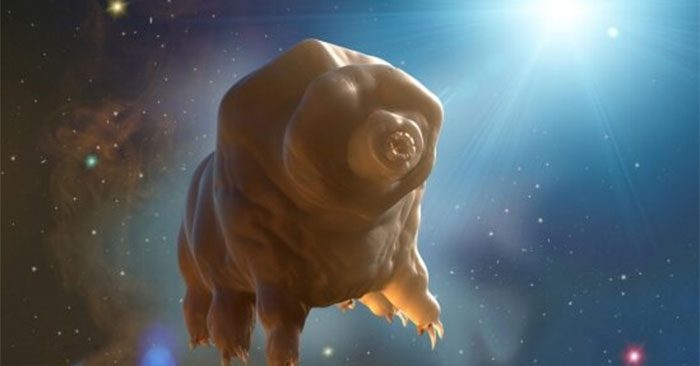Human spacecraft are not the first victims of immortal creatures. They frequently hitch rides on other Earth organisms when they need to travel far.
A recently published study in Scientific Reports reveals an interesting habit of tardigrades – immortal creatures, space travelers, and representatives of a series of quirky characteristics.
Despite being “immortal,” they can live anywhere on and off Earth: in oceans, rivers, lakes, swamps, under crushing pressure, in ultraviolet radiation, in a vacuum environment, and even when shot out of a gun… however, tardigrades face significant challenges in moving with their heavy bodies and short legs.
Thus, they have chosen a type of “bus”: snails, according to Science Alert.

Tardigrades are known for their ability to… travel in space – Photo: PHYS
Although snails move very slowly, they are still much faster than tiny tardigrades. In a new experiment, a research team led by Associate Professor Zofia Książkiewicz-Parulska and Dr. Milena Roszkowska from the Institute of Environmental Biology, Adam Mickiewicz University (UAM – Poland) collected two species of snails in the forests of Western Europe and had them crawl over moss fragments or droplets of water containing tardigrades.
As a result, in a flash, the tardigrades quickly clung to the slimy bodies of the snails. Each snail carried between 12 to 38 “immortal monsters” as hitchhikers.
However, it was also an adventurous journey because the snail slime dries out quickly. If they are unlucky and cannot find a water environment to dissolve this slime, the tardigrades can become frozen. Once frozen, even if they encounter water later, only 34% of tardigrades are strong enough to revive.
These journeys actually play a crucial role in the species’ development, as they facilitate “distant marriages,” helping to improve genetic diversity among different tardigrade populations.
Previously, a group of tardigrades was believed to have made a “historic” journey by hitching a ride on Israel’s Beresheet spacecraft, which was launched in April 2019. This spacecraft crashed directly onto the Moon. Scientists are still debating whether these hitchhiking “immortal monsters” died in the accident or are still thriving and have become the first residents of the Moon.

















































